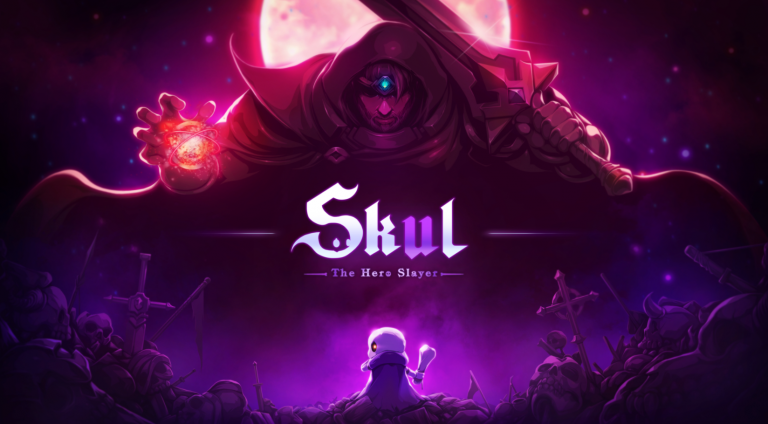gamelizerteam@gmail.com
Skul: The Hero Slayer | Review

Skul: The Hero Slayer is a rogue-elite action game with platformer elements made with pixel art. The player takes control of Skul, a little skeleton after the attack of the heroes at the Demon Castle, which serves as the headquarters of all the monsters. After this event, Skul is given the task to rescue the Demon King who has been captured by the First Hero, the strongest amongst the heroes.
Being a rogue-elite game, means that every run is different from the previous but there are permanent upgrades the player has access to, in order to make their quest easier. There are also many upgrades, in the form of items,skulls and quintessence, that the player can gather along their run but will only last for that specific run. Items are what one would expect, they boost some of your stats or add a unique abillity to your kit such as : Every time you jump you drop a bomb that deals damage etc. The unique part about the item system is that every item bears two inscriptions. By having multiple items with the same inscription the player gains further upgrades, for example the inscription courage gives a player extra physical damage by 5%/10%/15%/25%/40%/65%/100%/145% depending on the items with the inscription courage the player has. By having the ability to carry 9 items each time, each with their own unique effect AND having every item bearing two inscriptions, the player can customize their run up to their liking, either that being focusing on physical attacks, on magic or being a brick wall. There are a total of 36 inscriptions in the game so the player can mix and match. Quintessence is an active item the player can acquire while in the middle of a run. Although the player can carry only 1 quintessence at a time, these can be really powerful depending on their rarity. Skulls are exactly what you’d expect, skulls. The player can have 2 skulls at a time and every skull has it’s unique abilities and rarity. By destroying different skulls the player can acquire bones in order to further upgrade the skulls they want to play with, making both them and their abilities stronger for the current run. The skulls are divided in 3 main categories: Power, Balance and Speed each offering a different playstyle.







There are a total of 5 areas in the game. Each area has unique enemies and a boss the player must face in order to proceed to the next area. Every time the player clears a room they are given a choice between two doors (or even one) in order to decide the reward for the next room (except when the player has to face the boss of each area). These doors can be: Green (decorated with skulls and bones) which means that clearing this encounter will result in a skull, Yellow (decorated with treasure chests) which means that clearing this encounter will result in a random item for the player and Orange that gives gold to the player upon completion.
There are also minibosses the player has to fight through, that get progressively more difficult. Every few rooms the player will encounter hub-like sort of area where they can purchase food (to restore hp and gain a temporary buff), items, quintessence or even swap a skull they own with one other. In every area except the last one the player can save a monster and if they do that monster will assist them in the later runs. There are a total 4 monsters that can be saved, and every one helps the player in their own way.
Overall, the amount of items,quintessence and skulls the game provides makes it’s replayabillity quite big as someone would expect from a rogue-elite type of game. The game’s difficulty doesn’t fall short either as it gets quite difficult especially in the 4th area. Even after beating the game the player can keep playing and try out new combos with items/skulls or try to rebuild the Demon Castle which will take a lot of grinding if someone chooses to do so.



